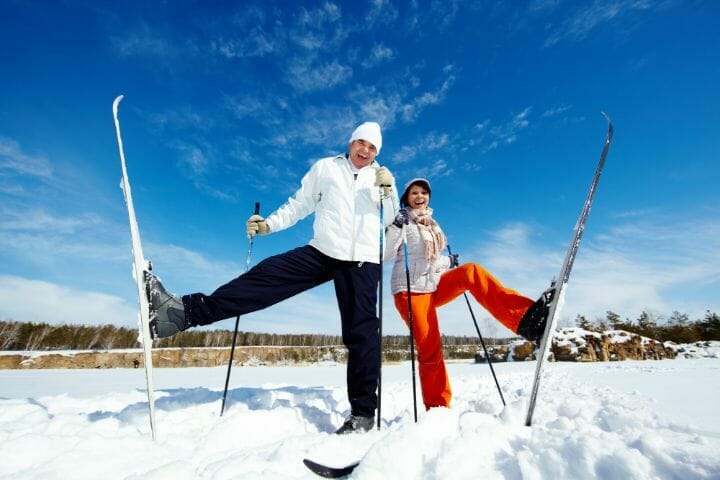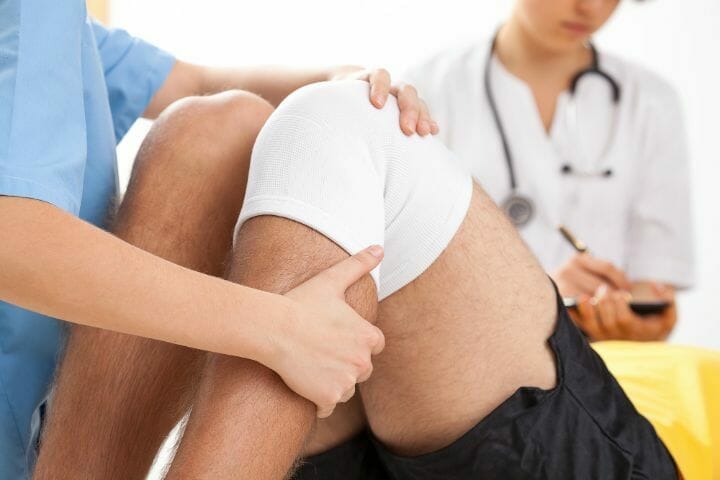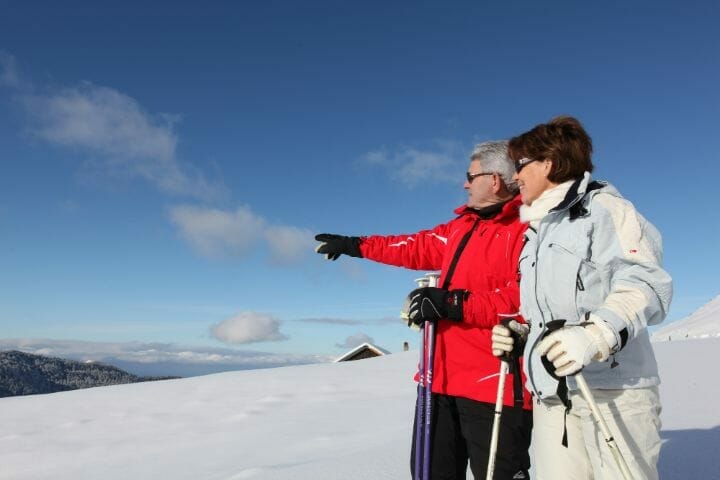Knee replacement can be a life-altering surgery. After undergoing it, people suffering from acute knee joint pain with little or no mobility can function with almost no pain for the first time in a very long time.
However, does it mean that you can go back to doing all those things you loved with an artificial knee, including rigorous sports like skiing?
The answer to this question is in the affirmative. You can get back on the slopes with a new knee, but you have to give it time.
It takes about 3-6 months after the surgery to get back to this adventure sport after taking the necessary precautions and undergoing the physiotherapy routine meticulously.
Read on to know about the precautions and tips for care that shall help you get back to those slopes.
Contents
Rehabilitation Program for Skiers After Knee Surgery
Skiing is a strenuous sport that puts a lot of pressure on the knee joints. Therefore, all ski enthusiasts who want to get back to this adventure sport must complete mandatory physiotherapy rehabilitation and focus on strengthening the knee joint.
The tissues need a minimum of 3-6 months to heal before handling the demands of downhill skiing. Physical therapy starts about a week after the surgery and involves increasing the range of motion and strengthening the knee.
Here is a routine all skiers must follow to get back to their favorite sport.
1. In the first week, you need to ice, rest, and elevate the knee as much as possible to reduce the swelling. During this time, it is recommended that you work on those quad muscle shrinking, and straight legs raises. Add to this a couple of exercises for increasing your coverage of motion, like bending and stretching both knees.
2. Add to this a couple of exercises for increasing your range of motion, like bending and extending both knees.
3. In the first 2-3 weeks, the wound heals. The healing focuses on edema management, which entails reducing the swelling caused by fluid trapped in tissues and range of motion. The main aim in this period is to progress from walking with a walker to a cane.
4. Over the next three weeks, the tissue undergoes remodeling, which is essentially the process through which the newly healed tissue blends into normal tissue configuration. The primary focus is on achieving an optimal range of motion and gradually progressing towards bodyweight training. During this time, you should wean off the cane and start walking up & down the stairs.
5. From the sixth week to the third month, your aim should be to restore the full range of motion and go deeper into strengthening the muscles around the knee. You should be able to do squatting tasks like getting in and out of a chair, walking without limping, walking up and down the stairs, and maintaining balance with single-leg standing.
6. The primary tissue maturation happens over the next 3-6 months. So after three months, you should continue with strength and balance exercises with plyometrics (a type of exercise that uses speed and force to build muscle power, like pushups, running, jumping, and kicking) and ski-specific training. You could begin with-
- Getting up and down to the ground and wearing ski boots.
- Walking up and down the stairs with ski boots
- Completing at least 30 squats in a minute and single-leg balancing for about 30-60 seconds.
- Doing ski-specific drills like jumping right and left continuously or squatting with weights. Essentially, all the exercises mimic the demands of downhill skiing.
You may also like Driving After Knee Replacement – All You Need to Know
Factors to Consider Before Your First Ski
Now you are done with your rehabilitation and are geared up for the upcoming skiing season. But you will have to accept the fact that for quite some time you cannot hop back on the slopes as you did before.
Initially, you will have to be more selective about the terrain you ski on and the days you choose. Here are some tips to keep in mind as you slide down those lofty slopes:
1. Begin each day of skiing with an easy run and check in with your knees.
2. Check the snow conditions. It is best to start with soft snow to ease your new knee into skiing and reduce the extent of the injuries from the falls.
3. Have the ski boot fastened in a looser setting so that your leg does not feel too cramped.
4. Look for groomed snow and avoid moguls or bumps. A groomed surface is created by running a snow-groomer vehicle down the slopes and packing all the snow down to make it tight and compressed. It is easier to ski on these surfaces.
5. Keep to green runs (wide and shallow slopes) initially and then start blue runs (slopes which are much steeper).
You may also like Best Age for Knee Replacement Surgery
Preparations for Skiing After Knee Replacement
Getting back to skiing after a knee replacement surgery is quite a daring feat but for those in love with the adrenaline rush that comes with sliding down slopes, it is almost a must-do. And why not?
With all the precautions in place and the complete rehabilitation routine followed, you are good to go. Just follow these small but essential pointers as you take to the slopes for the first time after getting your new knee.
1. Before your first sojourn with the skis take a Sport Test. This will show your readiness for the sport and the ability of your new knee to handle the pressures of skiing.
The functional sports test includes exercises with cord resistance. These exercises help correct muscle imbalances and enhance muscle activation. These exercises mainly target the quads, glutes, and calves. Some of the recommended ones for skiing are:
- Forward running with cord resistance for a minute
- Backward moving along with cord resistance for a single minute
- Side to side movement along with cord resistance for a single minute
- One leg knee dips along with cord resistance for a minute.
If you can do these exercises easily without knee pain or swelling or muscle fatigue, you are good to get started.
2. Start with dry land training to get back adequate balance and strength for skiing. It includes jumping from left to right continuously like you would be doing while skiing. It is best to do this activity outdoors in a terrain with a slight incline.
3. Work on groomed slopes for an hour or more at a time to check your endurance levels.
4. Wear a knee brace while skiing for the initial few times till your knee feels strong and well-settled to take the strain of skiing downhill.
Contact your orthopedic surgeon if you have any pain, stiffness, swelling, and joint weakness. Also, keep in mind that most injuries happen at the end of the skiing session due to low energy levels and joint fatigue. So be mindful of that and stop skiing before you are too tired.
You may also like How Much Does a Knee Replacement Weigh
Final Word
Skiing is an enjoyable sport even for seniors, but it is tough on the knees, especially if you have undergone knee replacement surgery.
However, with a proper recovery routine involving physiotherapy and a ski-related workout, you can slowly but surely return to this thrilling activity. The mantra is to take it slow and follow all precautions and post-operative care.




